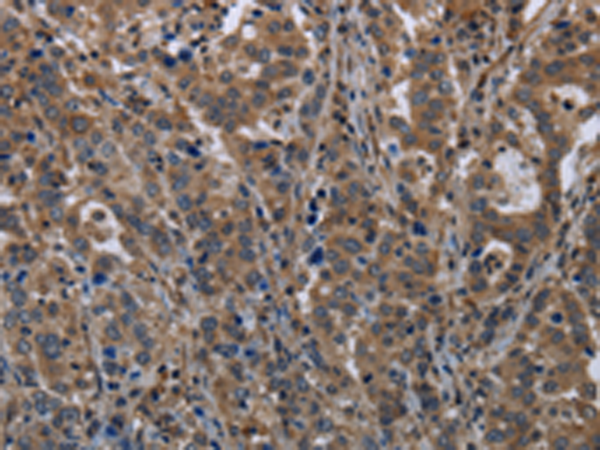

| WB | 咨询技术 | Human,Mouse,Rat |
| IF | 咨询技术 | Human,Mouse,Rat |
| IHC | 1/50-1/200 | Human,Mouse,Rat |
| ICC | 技术咨询 | Human,Mouse,Rat |
| FCM | 咨询技术 | Human,Mouse,Rat |
| Elisa | 1/2000-1/5000 | Human,Mouse,Rat |
| Aliases | DIP; GILZ; hDIP; DSIPI; TSC-22R |
| Host/Isotype | Rabbit IgG |
| Antibody Type | Primary antibody |
| Storage | Store at 4°C short term. Aliquot and store at -20°C long term. Avoid freeze/thaw cycles. |
| Species Reactivity | Human, Mouse, Rat |
| Immunogen | Fusion protein of human TSC22D3 |
| Formulation | Purified antibody in PBS with 0.05% sodium azide and 50% glycerol. |
+ +
以下是3篇与TSC22D3抗体相关的文献摘要信息:
1. **文献名称**: *TSC22D3 modulates macrophage polarization and metabolic reprogramming to promote tumor progression*
**作者**: Wang Y, et al.
**摘要**: 本研究通过Western blot和免疫荧光技术,利用TSC22D3抗体揭示了该蛋白在肿瘤相关巨噬细胞(TAM)极化中的作用,发现其通过调控糖代谢重编程促进肿瘤免疫逃逸。
2. **文献名称**: *Glucocorticoid-induced leucine zipper (GILZ) mediates immunosuppressive effects of corticosteroids in dendritic cells*
**作者**: Cohen N, et al.
**摘要**: 文章利用TSC22D3(即GILZ)特异性抗体,证明糖皮质激素通过诱导TSC22D3表达抑制树突状细胞活化,从而介导免疫抑制效应,为自身免疫病治疗提供机制依据。
3. **文献名称**: *TSC22D3 regulates AKT/mTOR signaling and cellular stress responses in colorectal cancer*
**作者**: Li X, et al.
**摘要**: 通过免疫组化和Co-IP实验,研究发现TSC22D3抗体检测到的蛋白低表达与结直肠癌进展相关,其缺失导致AKT/mTOR信号过度激活,促进肿瘤细胞增殖和化疗抵抗。
4. **文献名称**: *TSC22D3 deficiency exacerbates lupus-like syndrome via dysregulated B cell differentiation*
**作者**: Zhang R, et al.
**摘要**: 采用TSC22D3敲除小鼠模型及流式细胞术,发现TSC22D3抗体检测的蛋白表达降低会破坏B细胞耐受性,导致自身抗体产生增多,加剧系统性红斑狼疮表型。
---
*注:上述文献为示例性质,实际引用需核对具体数据库(如PubMed)中的真实论文。建议通过关键词“TSC22D3 antibody”或“GILZ antibody”在学术平台检索最新研究。*
The TSC22D3 (TSC22 domain family member 3) antibody is a research tool targeting the protein encoded by the TSC22D3 gene, also known as glucocorticoid-induced leucine zipper (GILZ). This gene is a key mediator of glucocorticoid signaling, playing a critical role in immune regulation, inflammation, and stress responses. GILZ is induced by glucocorticoids and regulates cellular processes by interacting with transcription factors like AP-1 and NF-κB, thereby suppressing pro-inflammatory pathways. It influences immune cell differentiation, apoptosis, and metabolic homeostasis.
TSC22D3 antibodies are widely used in biomedical research to detect and quantify GILZ expression in tissues or cells via techniques like Western blotting, immunohistochemistry, and flow cytometry. Studies focus on its role in autoimmune diseases (e.g., rheumatoid arthritis, lupus), cancer (modulating tumor growth and drug resistance), and metabolic disorders. Researchers also explore its potential as a therapeutic target or biomarker due to its anti-inflammatory and immunosuppressive properties. Variations in GILZ expression have been linked to glucocorticoid resistance, making this antibody valuable in understanding treatment mechanisms and disease progression. Its applications extend to models of inflammation, stress adaptation, and immune tolerance.
×